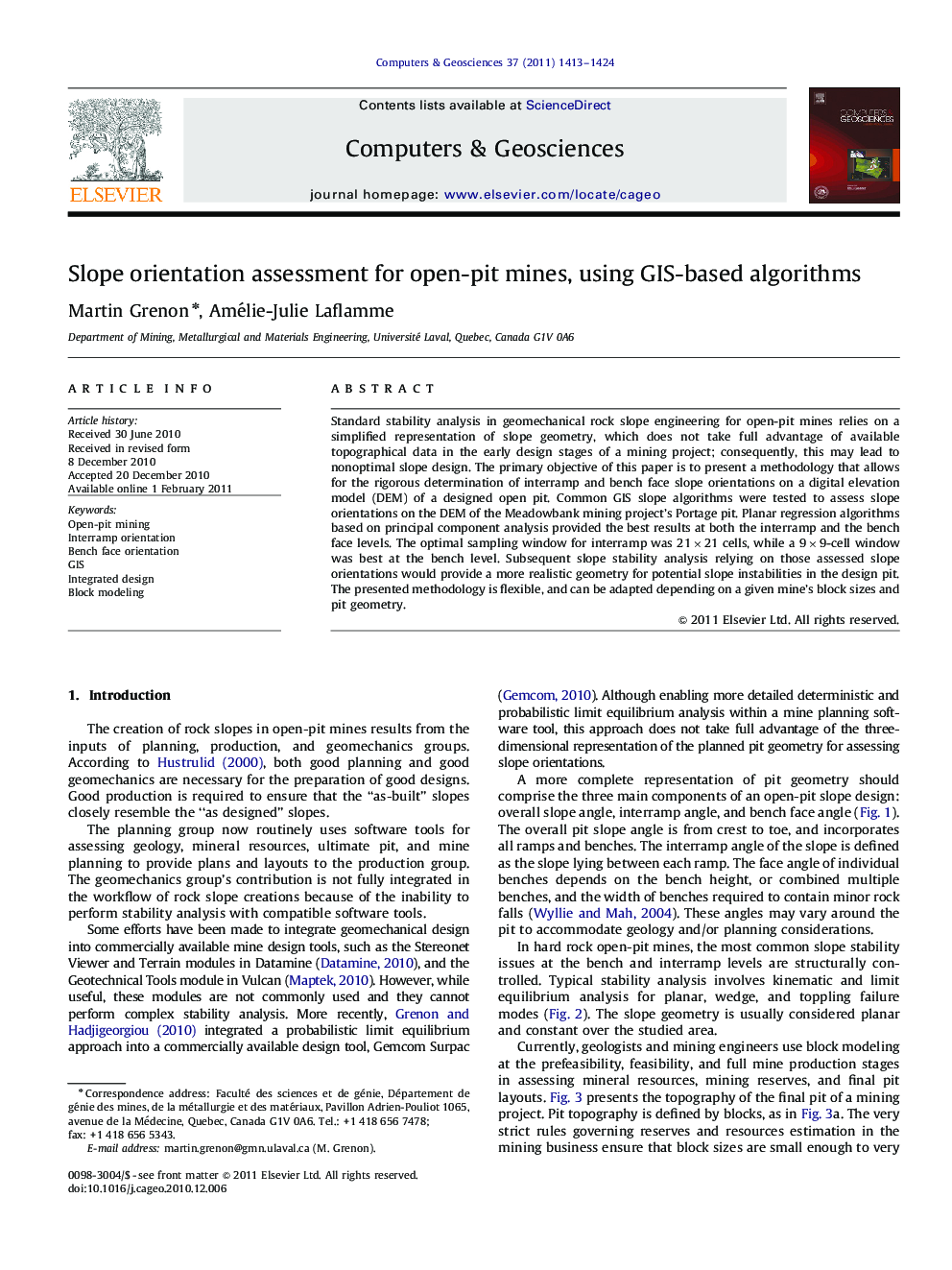| Article ID | Journal | Published Year | Pages | File Type |
|---|---|---|---|---|
| 507180 | Computers & Geosciences | 2011 | 12 Pages |
Standard stability analysis in geomechanical rock slope engineering for open-pit mines relies on a simplified representation of slope geometry, which does not take full advantage of available topographical data in the early design stages of a mining project; consequently, this may lead to nonoptimal slope design. The primary objective of this paper is to present a methodology that allows for the rigorous determination of interramp and bench face slope orientations on a digital elevation model (DEM) of a designed open pit. Common GIS slope algorithms were tested to assess slope orientations on the DEM of the Meadowbank mining project's Portage pit. Planar regression algorithms based on principal component analysis provided the best results at both the interramp and the bench face levels. The optimal sampling window for interramp was 21×21 cells, while a 9×9-cell window was best at the bench level. Subsequent slope stability analysis relying on those assessed slope orientations would provide a more realistic geometry for potential slope instabilities in the design pit. The presented methodology is flexible, and can be adapted depending on a given mine's block sizes and pit geometry.
